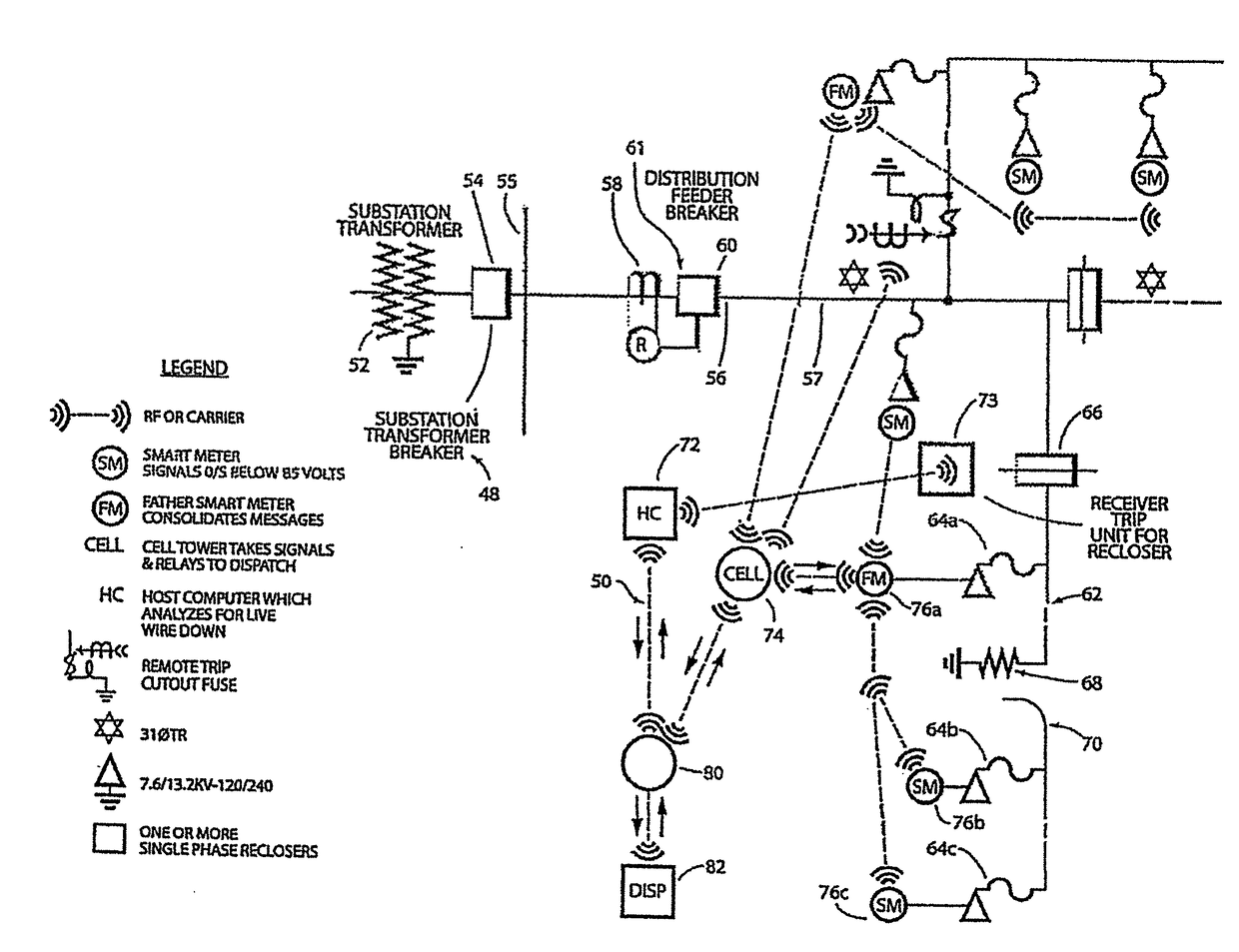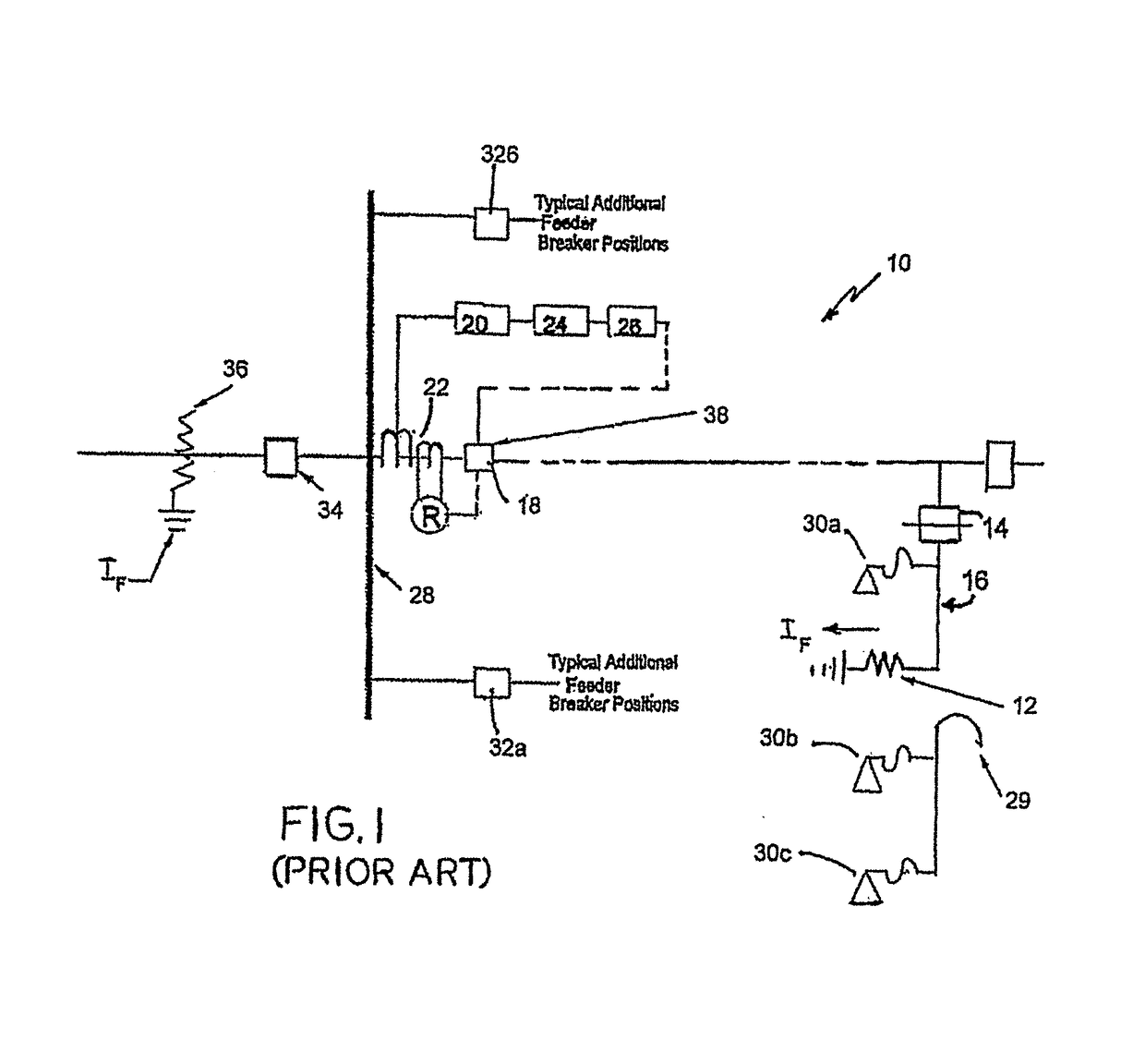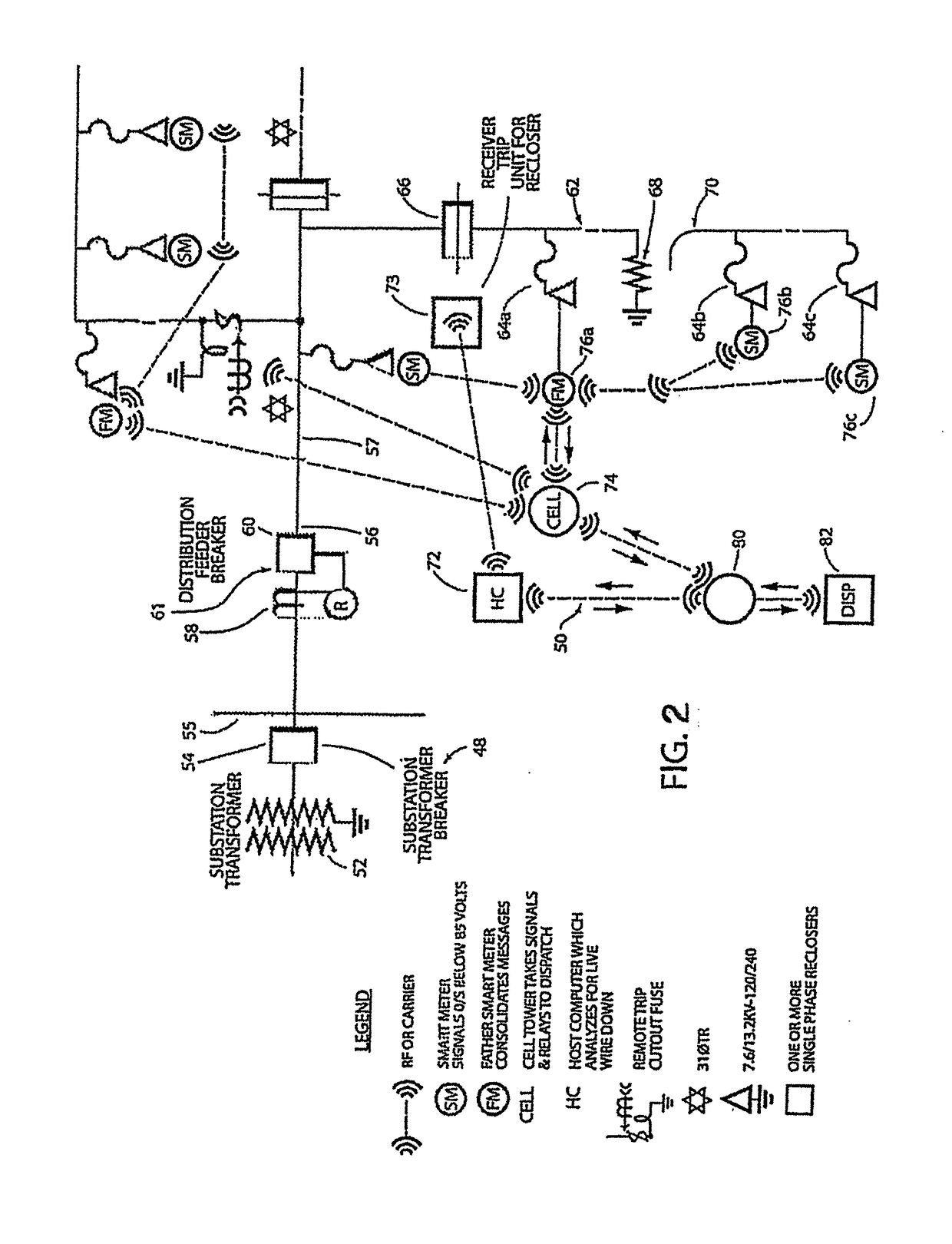Localized application of high impedance fault isolation in multi-tap electrical power distribution system
a multi-tap electrical power distribution system and high impedance fault technology, applied in the direction of fault location by conductor type, short-circuit testing, instruments, etc., can solve the problem of inability to distinguish low fault current (high impedance fault) from normal load current, and the application of overcurrent protection devices
- Summary
- Abstract
- Description
- Claims
- Application Information
AI Technical Summary
Benefits of technology
Problems solved by technology
Method used
Image
Examples
Embodiment Construction
[0024]Referring to FIG. 3, there is shown in simplified schematic diagram form the involved components on a single phase utility overhead distribution circuit tap 200 which is adapted to clear a live wire down fault in accordance with one embodiment of the present invention. Single phase tap 200 includes a mainline feeder 122 carrying electrical energy from a power source (not shown in the figure). Mainline feeder 122 is coupled to and supported by an electric pole 124 having an attached first cross member 121.
[0025]Attached to a second cross member 123 on the electric pole 124 is a primary tap fuse isolator 201 and a trouble primary tap 202 which was previously formed with and attached to a now broken primary wire 203 which includes a high impedance fault 126. Trouble primary tap 202 represents a portion of the primary tap which is still electrically alive. Attached to the trouble portion of the primary tap 202 is a serially coupled combination of a first transformer 204 and a firs...
PUM
 Login to View More
Login to View More Abstract
Description
Claims
Application Information
 Login to View More
Login to View More - R&D
- Intellectual Property
- Life Sciences
- Materials
- Tech Scout
- Unparalleled Data Quality
- Higher Quality Content
- 60% Fewer Hallucinations
Browse by: Latest US Patents, China's latest patents, Technical Efficacy Thesaurus, Application Domain, Technology Topic, Popular Technical Reports.
© 2025 PatSnap. All rights reserved.Legal|Privacy policy|Modern Slavery Act Transparency Statement|Sitemap|About US| Contact US: help@patsnap.com



